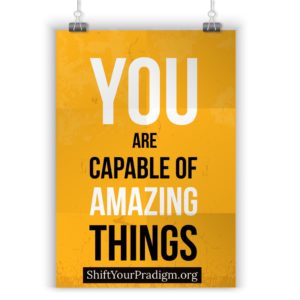 This post is part of a series connected to the podcast Shift Your Paradigm: from school-centered to learner-centered. Lynn and I will be sharing our learning and thinking along the way and cross-posting to the Shift Your Paradigm site.
This post is part of a series connected to the podcast Shift Your Paradigm: from school-centered to learner-centered. Lynn and I will be sharing our learning and thinking along the way and cross-posting to the Shift Your Paradigm site.
In Episode 36, we visited with the Founder/Executive Director and a learner from an innovative learning environment in Bethel, CT – Workspace, a maker and co-working space designed to help families implement education their way in a vibrant learning environment. Families choose and co-create what their children need in this private school environment. The learning environment is a place where parents can teach, bring in teachers and experts, or choose from a database of tutors and teachers, online classes, and curriculums, as well as a smorgasbord of classes that appeal to all kinds of learners.
Key Competency
Learner-centered leaders approach work with learners using an assets model. They believe all learners have passions, interests and curiosities. Effective learning environments build upon these.
Takeaways
- Catherine Fraise, the Founder and Executive Director of Workspace has brought to life an audacious vision for learning: Google-like-high-tech spaces and feel, parental and family engagement and involvement, high levels of learner agency, support resources to help parents co-design powerful learning opportunities with their children.
- The Workspace environment provides learners with the opportunity to explore their curiosities. “I feel as though Workspace has given me the option to try things and really tell me where my curiosity will lead me, so that my curiosity takes me through the world.”
- The Workspace learning environment is designed to provide learners with options. For example, Raphael, the learner on the podcast, spoke about the Socrates room. “I think that was really a powerful moment for me when I realized the space was giving me a toolbox and not a piece of paper that told me, ‘These are all the things that you’re going to do.’ It wasn’t a checklist. It was options.”
- Learner-centered leaders need to be great listeners and observers if they want to create the ideal environment for personalization.
- Learner-centered leaders understand that age and quality of ideas do not necessarily go hand-in-hand. They respect everyone for his/her ideas. Young and old are co-learners.
- Learners have opinions. They have power. They can be heard. Learner-centered leaders encourage that. Raphael shared, ” As long as that is encouraged, speak out whatever it is that you’re thinking, and dream as big as possible.”
Connections to Practice
- Workspace has a high level of family engagement. While our families are not engaged at a level we may want, conversations with parents and board members indicate a level of support for our learner-centered vision.
Questions Based on Our Practice
- Do we operate from an asset model? Under what circumstances do we drift?
- While Workspace is a private school with different constraints than traditional public schools? What elements of Workspace could transfer to public schools/our schools? What constraints of the public school system (policy, funding, etc.) are we not yet pushing on hard enough to realize an audacious vision for learning?
- As we move toward our vision of a competent learning, how will we ensure the vision is available to all learners regardless of how well they read, how much money their family has, the language they speak or what they believe in?
- It would appear that Workspace provides significant room for families to determine what learners need to know and be able to do. Where does the role of community fit into the vision for learning? What other “communities” shall we engage in our work as we strive to develop competent learners? What happens when the members of various communities do not accept the invite to be involved?
- How are we getting to know our learners – young and old – so we are able to design environment conducive to personalization?
- What areas could we be more “learner-centered”? For example, looking at our goals, how can families and learners intersect with the work, improving the outcome? What’s appropriate?
Next Steps for Us
- As part of our goals this year, draft an advocacy/policy white paper on learner-centered education in the context of a rapidly changing future to share with policymakers as appropriate.
- More intentionally include conversations about learning space design in task redesign activities this year.
- Design creative ways of engaging families in the learning process. How do we go beyond the custodial role of education in the current era?
- Uncover areas in our goals where we could be more learner-centered.
Connect with Randy on Twitter, the TLTalkRadio podcast, and the Shift Your Paradigm podcast!
Get new content delivered to your inbox and the ebook 3 Key Principles of Digital Transformation. The ebook contains valuable information from my experience leading a digital transformation and working with a variety of stakeholders over the past decade.
- Shift Your Paradigm: Putting Learner-Centered Lessons Into Practice (Part 4) [#ShiftYourParadigm] - July 9, 2019
- Shift Your Paradigm: What Does Learner-Centered Leadership Look Like? (Part 3) [#ShiftYourParadigm] - March 13, 2019
- Shift Your Paradigm: What Does Learner-Centered Leadership Look Like? (Part 2) [#ShiftYourParadigm] - February 27, 2019